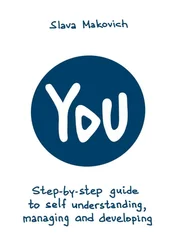Do asexual people also delay their coming-out experiences for fear of public reprisals, believing that the world will be unjust to them? It is hard to know at this point, because there is no research on the issue. I expect, however, that some probably do, given that most asexual people likely believe that they will be perceived with some level of public disdain when they come out. In fact, I expect that a portion of the public do perceive asexual people to be very unusual and bizarre—in short, “freaks.” For example, although some of the heterosexual majority may have ambivalence toward gays and lesbians, gays and lesbians are, like heterosexual people, interested in sex. In contrast, asexual people may seem especially foreign to average (heterosexual) people. It is clear from some of my media appearances (e.g., on talk or radio phone-in shows) that some members of the general public do indeed hold these views and are not afraid to espouse them publicly. There is also some recent evidence that asexual people may, in fact, be viewed more negatively than gays, bisexuals, and lesbians—specifically, as “less than human” (see more in chapter 4) (MacInnis & Hodson, in press).
However, some asexual people may not fear public reprisals with the same intensity as gays and lesbians, because they sense that the discrimination against them may be less virulent than what can occur against gays and lesbians. For example, homosexual men are sometimes the victims of “gay bashing” (Berrill, 1992; Federal Bureau of Investigation, 2002). Indeed, the vitriol directed against asexual people may never reach the same intensity as that which has historically been directed against gay men, partially because asexual people probably do not challenge the gender-role expectations of heterosexual men in the same way that gay men do. Some heterosexual men view the effeminacy of some gay men with particular disdain, yet there is no direct evidence of elevated effeminacy in asexual men (but see more on gender in chapter 6). Gender nonconformity likely plays a role in some gay men’s fears of coming out, as we discovered that effeminate gay men who believe that the world is unjust are especially likely to delay the coming-out process (Bogaert & Hafer, 2009).
Let’s consider some other unique features of asexual development that may contribute to differences in coming-out experiences between asexual people and gays/lesbians. One is the degree of newness of the “asexual” label/identity; after all, asexual identities are likely very recent phenomena (see also chapter 3). A related one is the diffuse nature of the asexual community; recall that asexual people comprise a diverse bunch (see, for example, chapter 5). These features may delay the coming-out experience in asexual people. For example, one asexual woman I met did not come out until her twenties because she just didn’t know “what” she was until recently. This makes sense: How can one go through the identity process (including coming out) when there is no obvious group with whom to identify? Recall that labeling oneself (e.g., as “gay”) usually comes before, and is arguably a necessary precursor to, coming out (Cass, 1979; Coleman, 1982; Troiden, 1989). After all, one needs a recognizable group, with a label, with whom to identify and of which to come out as a member. Until very recently, there has been no organized and publicly identifiable asexual group. In contrast, gays and lesbians have had a visible and identifiable presence in the Western world for many years, arguably for at least thirty years or more (e.g., Terry, 1999). Of course, despite this fact, some gays and lesbians also may not know their sexual identities until later in life. However, I expect that young people with emerging same-sex attractions have much better access to information on gay and lesbian identities and cultures than young people without any sexual attractions have on asexual identities and cultures.
There is support for the reasoning that asexual people may come out later (or not at all) because there has not been, until recently, a visible group with whom to identify. Bisexuals have more identity confusion and come out later than gays and lesbians, and it has been argued that this difference occurs because there is a less visible and organized bisexual community relative to the gay and lesbian community (Fox, 1995).
Another unique feature of asexual development that may affect public disclosures and coming out in asexual people, relative to gays and lesbians, was mentioned earlier: lack of sexual behavior does not need legitimizing in the same way as same-sex behavior (e.g., fellatio among men). After all, no one was ever caught not engaging in sex and then put in prison for it. Asexual people, then, may have a reduced need to come out, or at least a reduced need for public displays of their sexual orientation, as there is less of a need to defend their behavior. Indeed, one might argue that the emergence of the gay/lesbian community as a social force occurred, at least partly, to secure this legitimacy from the heterosexual majority and the politicians who serve them. Relatedly, one might also argue that a coherent and integrated sexual identity in gays and lesbians was also born of this necessity, in order to allow the group to fight for their rights as unique sexual beings and to engage freely in sex in the manner of their choosing. In short, it is important to recognize that (sexual) identities may also emerge out of and serve political and social goals. Note that I am not implying that a gay/lesbian identity was consciously created by gay and lesbian political activists, although such activism may have contributed to this identity; broad social forces also might have acted to bring these identities to the fore (Terry, 1999). Interestingly, the military understands these processes and political/social forces. They use young people’s search for an identity and their need to belong (e.g., You are a Marine! ) to achieve similar but more extreme social/political effects during basic training: to motivate and ready soldiers for battle (Dyer, 1985).
If asexual people have less need for battle against oppressive forces in society (relative to gays and lesbians), this may also partly explain why they have been unrecognized as a social group, and why a coherent asexual identity and culture has not emerged until recently. Asexual identities and group cohesion among asexual people are not necessities for many asexual people, as asexual behavior is not at stake if they don’t rail against “the man.” In contrast, historically, gay and lesbian people needed to—and often still need to—rail against the (heterosexual) man to ensure that they could engage in the sexual behavior of their choosing.
It is also true that sexuality, by definition, is a nonissue —off the radar, so to speak—for many asexual people (Scherrer, 2008). Thus, an asexual person’s need to assert an identity, particularly a public one, may have little “sexual” slant to it. This is in contrast to gays and lesbians, whose identity may be more sexualized. After all, sexuality is anything but a nonissue for them. Indeed, it is relevant and salient to their identities in two basic ways. First, gay people’s sexuality contrasts starkly with the heterosexual majority. Second, like heterosexual people, gays and lesbians are sexual beings, strongly influenced by their desires and attractions. Thus, their sexuality is doubly relevant and likely acts as a creative force in forging their identities. Of course, asexual people share with gays and lesbians their status as a sexual minority, and thus they also stand in contrast to a sexual majority. So, sexuality is potentially important to their identity also, as it makes them stand apart from the majority group. But unlike gays and lesbians, asexual people are not sexual beings (e.g., lacking in sexual attraction), and so sexuality, given that it is a nonissue , is not as likely to invade their psychic space and to take front and center position when their identities are being formed.
Читать дальше












